News
Mark Milburn’s Cornish Wreck Ramblings, Part 3: Falmouth’s Ghosts of the Great War
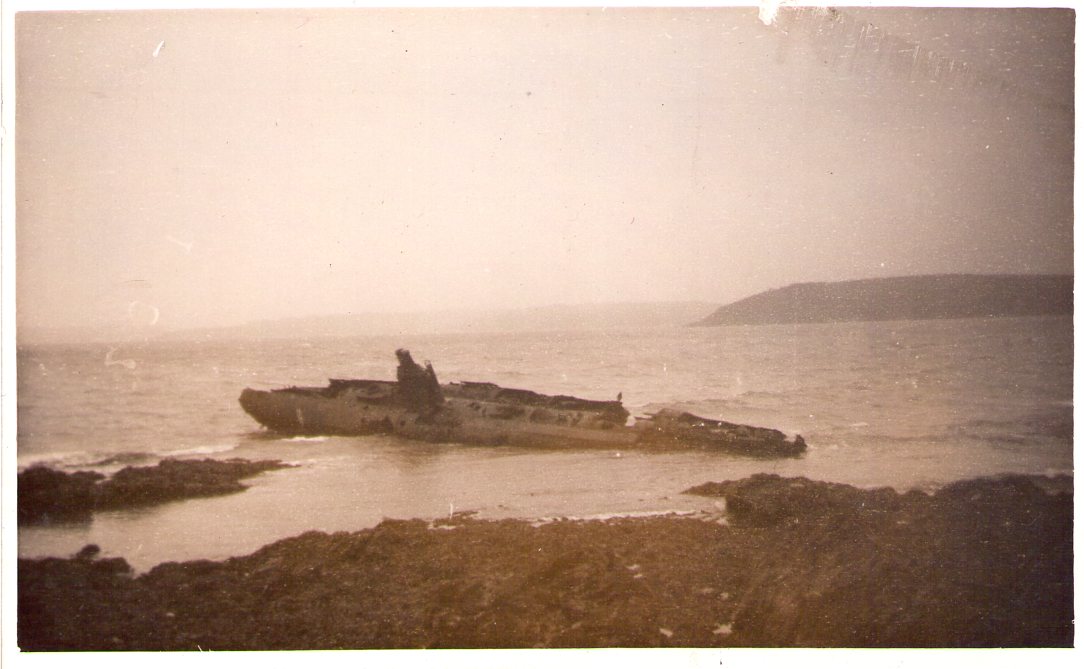
At the end of the Great War, the Kaiser’s high seas fleet was interned at Scapa Flow, Orkney. Due to some miscommunication or maybe a lack of communication, Rear Admiral von Reuter ordered the scuttling of the entire fleet. Most were removed straight away, except some of the vessels that were in deeper water. The German U-Boats in UK waters went to Harwich to surrender, receiving various fates over the next few years. Some were dispatched to Falmouth. The exact reason why any were sent to Falmouth does not seem to be documented too well. There are also misleading reports about the actual number sent – somewhere between five and nine. One supposedly broke its tow near Dodman point and started taking on water, so they used it for a bit of target practice; apparently it was easier to sink it than try and restart the tow.
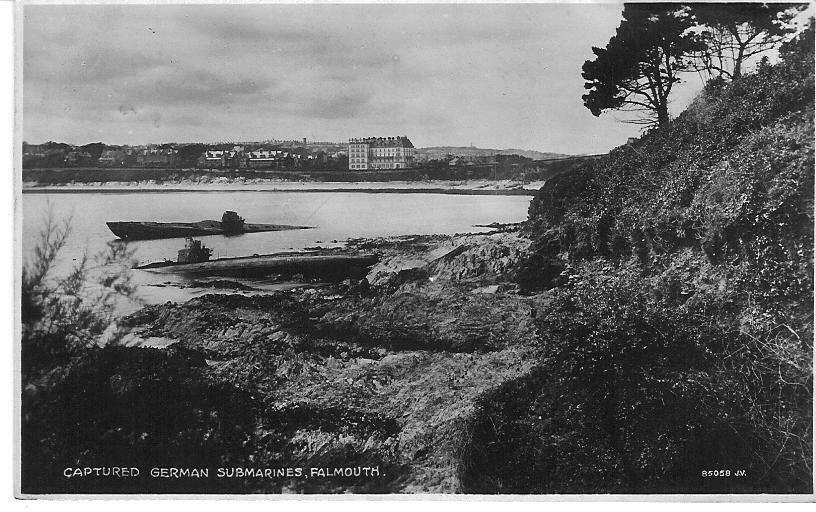
There are two U-Boats near Dodman Point, UB113 and UB118. UB113 was on patrol when lost according to official records, and UB118 was part of the convoy to Falmouth. The remaining U-Boats ended up moored in Falmouth Bay, awaiting whatever their fate would be. There are stories that a south easterly wind arrived and the U-Boats came adrift from their moorings. The large waves drove them onto the rocks. What we do know is that there are the remains of five left in the area.
Although the reason for the U-Boats being sent to Falmouth is not documented, it may well be that what happened to them once they arrived was the actual reason for their trip. Naval records within the National Archive state that they were used in experiments to test for weaknesses in their construction. A huge lifting rig, Cyklops, carried them out into deep water, lowering them down to the seabed. Cyklops moved away. Charges were set off at various places around the U-Boats, and the subs were then recovered and inspected for damage. This was repeated several times for each of the submarines. At the end of the tests, they were dropped off close to the rocks on Pendennis. Within the National Archive, there is a photo of UB86 and the stern of Cyklop, captioned “BEACHING U.B.86. STERN OF CYKLOP”. They were then manually hauled up onto the rocks below the castle. The official records did not state whether this happened over a period of a few years, or if it was just the one occurrence.
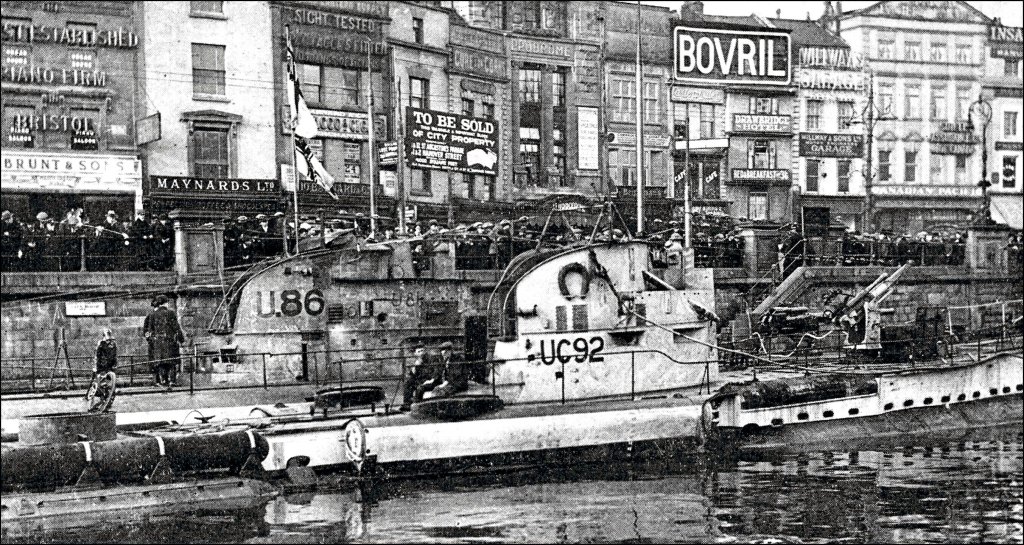
The official records stated that UB86, UB97, UB112, UB106, UB100, UB128 & UC92 arrived at Falmouth. So what is left now?
Over the years, many photos were taken of the submarines. Most offered no clues as to what they were. One photo, from an unknown source, shows a U-Boat in a gully, with its stern out of the water. On the side of the conning tower, it’s markings of UB86 are visible. Quite a bit of the submarine remains underwater. On a very low spring tide, some of it is visible from the surface.
A lot of contemporary photographs showed UB86 with another submarine close by. Within the records at Historic England, they have a collection of photographs, taken by a British Naval submariner at the time. They are of UB86 and the other submarine, and one of the photos shows the markings of that submarine as UB112. There are some remains of this submarine left, although most of it lies close to the sea bed. Divers notice a large three pronged fork, which is the highest point of the wreckage that remains. It is thought to be part of the hydrovane’s mechanism.
A little further east of these two wrecked submarines, there are remains of two more. Most of the time these lie hidden under the sand, only becoming exposed after some storms. These are virtually impossible to identify, although one may be UB106, according to an excerpt from the National Archive.
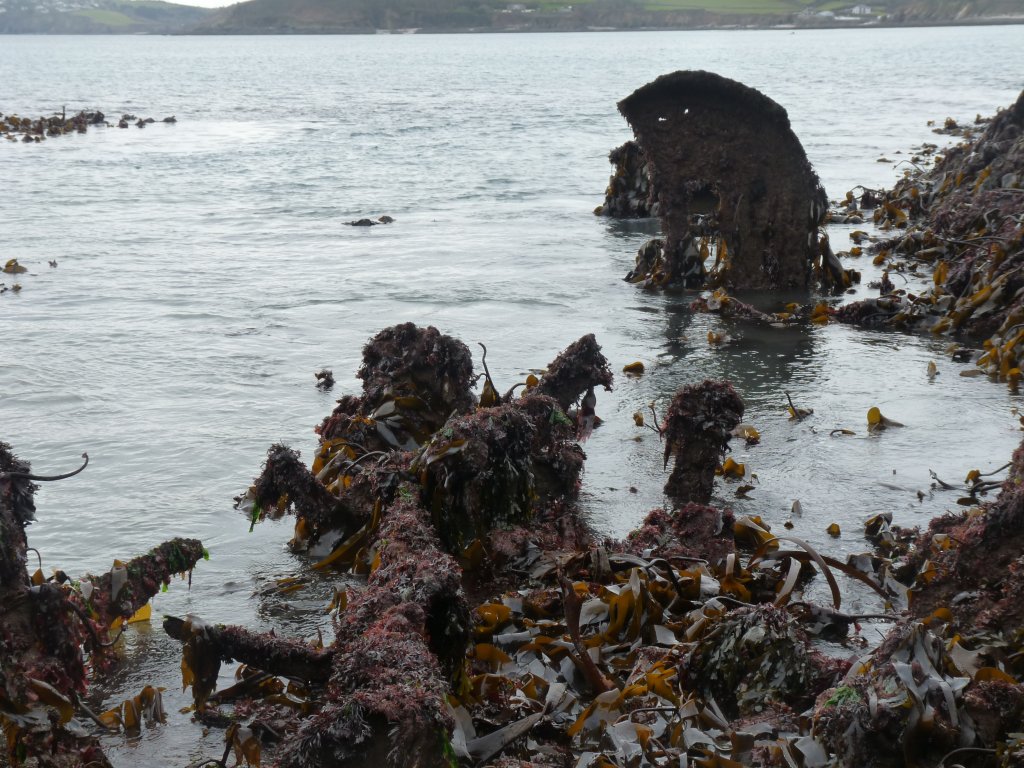
Wessex Archaeology spent two days in July 2013 investigating the Castle Beach site, taking photos etc. I assisted and even revisited to go and take a couple of extra measurements for their official record. There are six circular features near the shore end of the sub, measuring 1m in diameter and 9m from front of the first to the rear of the last. This was the last piece of data required to determine that it is in fact UC92. The six circular features are the mine shafts; UC92 was the only mine layer out of the six. Records state it was lifted in 1971 and scrapped, although it looks like it wasn’t lifted, just dragged up onto Castle Beach. The stern lies at 50.147027, -5.055695, the bow at 50.147299, -5.055984, and it is visible on Bing maps or Google maps. On a low spring tide, the bow is visible out of the water.
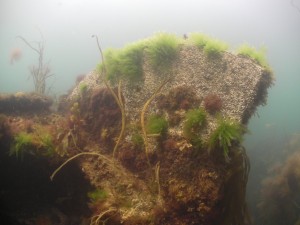
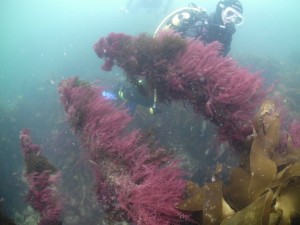
Over the years the Falmouth U-Boats have had a hard time. They were gradually broken up and salvaged. Whatever was left was then possibly flattened by George Renton in 1966/7. Contracted by the Navy or maybe by the Harbour Master, George did a fine job of flattening the remains.
Details within the National Archive “Explosive trials on German submarines: 1921“ ref:ADM 189/102, are held at the National Archives in Kew.
[hr style=”single”]
Find out more about Mark and Atlantic Scuba at www.atlanticscuba.co.uk.
News
Book Review: Fire on Monroe Bravo by Fred Lockwood

Fire on Monroe Bravo is the latest book in the Jack Collier series by Fred Lockwood. Our story begins with our lead characters, Jack and Sandro, owners of Marine Salvage & Investigation Company, arriving on the Monroe Bravo Oil & Gas Platform in the North Sea. Having secured a contract for their vessel the MV Stavanger to act as support ship to the platform for TransGlobal Oil, our protagonists are on a celebratory visit.
However almost as soon as they arrive a series of explosions rock the platform, causing huge damage, loss of life and the very real danger of a massive human, ecological and financial disaster.

As the danger mounts for both our heroes and the surviving workers, Jack and Sandro will have to escape the inferno, all while trying to save the platform and the men still trapped unable to help themselves.
The disaster sets the scene for the unfolding story lines following the fate of the platform and our main characters, the police investigation into a suspected terrorist act and the actions of TransGlobal Oil as they attempt to navigate the pubic outcry and financial repercussions.
In his eighth book, Fire on Monroe Bravo, Fred Lockwood delivers an explosive thriller, with plenty of above and in-water drama, and our heroes fighting for survival, what more can you ask for?
We thoroughly recommend this read and look forward to the next in the series. For more information about his book series, you can check out the reviews of his previous books here on Scubaverse.
- Title: Fire On Monroe Bravo
- Author: Fred Lockwood
- ISBN: 979-8325324536
Available in a paperback version and for Kindle from Amazon and book stores.
Blogs
Alonissos: The complete diving destination (Part 1)

In June we were incredibly fortunate to be invited to dive in Alonissos, a small Greek Island in the Sporades island chain located in the North Aegean Sea. While I have long been a big fan of the Greek Islands as a great holiday destination, I had not had the opportunity to do any diving on previous visits and Mike and I were extremely excited to see what Alonissos had to offer both above and below the surface!

The Sporades are easily accessible via the airport in Skiathos (the first island in the chain), which is served by Jet2 flights from all major UK airports from May through October. Numerous ferries and charter boats make island hopping from Skiathos Town a breeze. After an hour boat ride, the picturesque port of Patitiri was a wonderful introduction to Alonissos, where we were met by our gracious hosts Kostas of Albedo Travel and Dias of Alonissos Triton Dive Center. Mike and I were delighted to be staying at the Paradise Hotel, aptly named for its stunning views over the sea and great location for walking to the waterfront.

Alonissos is beautifully situated in the National Marine Park of Alonissos and the Northern Sporades, the largest marine protected area in Europe. The surrounding seas offer fabulous marine life, including incredibly rare species such as the Mediterranean monk seal. They boast deep walls covered in gorgonians and sponges, stunning topography with caverns, swimthroughs and pinnacles, and the first accessible ancient shipwreck from 500BC!

In locations where historical sites have been reported, the waters are largely restricted, but with collaboration between government, underwater archeologists and dive centres, incredible underwater museums are being created for a truly unique diving experience. Alonissos is home to the first of these, the Ancient Shipwreck of Peristera Accessible Underwater Archeological Site. The chance to dive into history (along with reports of healthy reef life and amazing underwater topography) meant Mike and I were keen to get in the water.

Our introduction to the diving around Alonissos was at the Agios Georgios Pinnacles, in the channel between Alonissos and Skopelos. This fantastic site was named “The Chimney,’ and proved to have a huge amount to see. We got to a decent depth here (over 25m), and marvelled at a colourful reef wall with a wonderful swim through whose rocky walls were absolutely covered with life. As well as brilliant topography there was no shortage of macro life here. We saw numerous nudibranchs, five different species in total. The second dive at Mourtias reef nearby was a shallower dive along a nice wall with lots of crevices. Several moray eels and grouper called this site home. We enjoyed looking in the crevices for lobster and smaller benthic life, such as cup corals and tunicates.

Our itinerary allowed us two dives a day with afternoons left to explore the island with our hire car and evenings to enjoy the famous Greek hospitality. This proved to be a lovely mix of in-water and land based diversions.

The next days diving to the Gorgonian Gardens and Triton’s Cave was to be even better! These two stunning sites are nothing short of fabulous. The Gorgonian Gardens was a deep wall near to the Agios Georgios islands. The ever-present currents in this deep channel meant that the sea life was amazing … the namesake Gorgonian sea fans dotted the wall at a depth of 30 to 50 meters, getting ever larger the deeper we went. Above 30m was by no means less beautiful, with sponges, corals, scorpionfish, moray eels and some rare and colourful nudibranchs.

The second shallower dive of the day was to Triton’s Cave or the Cavern of Skopelos, on the east side of that island. The spectacular rock formations had wild striations both above and below the water making a truly epic topography. The cavern entrance was at 14m, and big enough for a buddy pair, winding up to 6m and passing two beautiful windows out into the blue. Emerging from the cavern, the light at the shallower depths and the incredible rock formations made for a fantastic gentle swimming safety stop and we all surfaced by the boat with massive grins.

Check out our next blog :Alonissos: The complete diving destination (Part 2)” to hear about our amazing dive on the 2500 year old Peristera Wreck!
Thanks to:
Alonissos Triton Dive Center https://bestdivingingreece.com/
Albedo Travel https://alonissosholidays.com/activities/
Paradise Hotel https://paradise-hotel.gr/
Alonissos Municipality https://alonissos.gr/en/
-

 Blogs2 months ago
Blogs2 months agoDiving With… Nico, Ocean Earth Travels, Indonesia
-

 News1 month ago
News1 month agoMurex Bangka Announce New Oceanfront Cottages & Beachfront Dining
-

 Blogs2 months ago
Blogs2 months agoA new idea in freediving from RAID
-

 Marine Life & Conservation1 month ago
Marine Life & Conservation1 month agoIceland issue millionaire whale hunter a licence to murder 128 vulnerable fin whales
-

 Marine Life & Conservation2 months ago
Marine Life & Conservation2 months agoThe Shark Trust Great Shark Snapshot is back
-

 News3 months ago
News3 months agoCharting New Waters; NovoScuba Goes Global with the Launch of their Revolutionary Dive Training Agency!
-

 Gear News1 month ago
Gear News1 month agoNew Suunto Ocean – a dive computer and GPS sports watch in one for adventures below and above the surface
-

 Marine Life & Conservation Blogs2 months ago
Marine Life & Conservation Blogs2 months agoBook Review: Plankton















